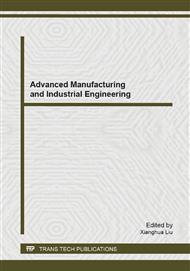p.787
p.792
p.797
p.805
p.811
p.815
p.821
p.826
p.833
Photoelectrochemical Sensing of Hydrazine Based on Palladium Film Modifying N-Silicon Electrode under Visible Irradiation
Abstract:
In this work, a palladium film has been evaporated on an n-silicon (n-n+-Si) surface and electrochemically activated by cyclic voltammetry (CV) to form a modified silicon photo-electrode. Scanning electron microscope (SEM) and x-ray photoelectron spectroscopy (XPS) were used to characterize the morphology and composition of the modified electrode surface. A new photoelectrochemical (PEC) cell based on the modified electrode was used as sensor for hydrazine determination by photocurrent measurements. The sensor showed good photocurrent responses by adding different concentrations of hydrazine with a good stability. The linear ranges for the detection of hydrazine are 2 to 20 μM with a detection limit of 0.5 μM in pH=7.0 phosphate buffer solution (PBS).
Info:
Periodical:
Pages:
811-814
Citation:
Online since:
August 2014
Authors:
Price:
Сopyright:
© 2014 Trans Tech Publications Ltd. All Rights Reserved
Share:
Citation:


